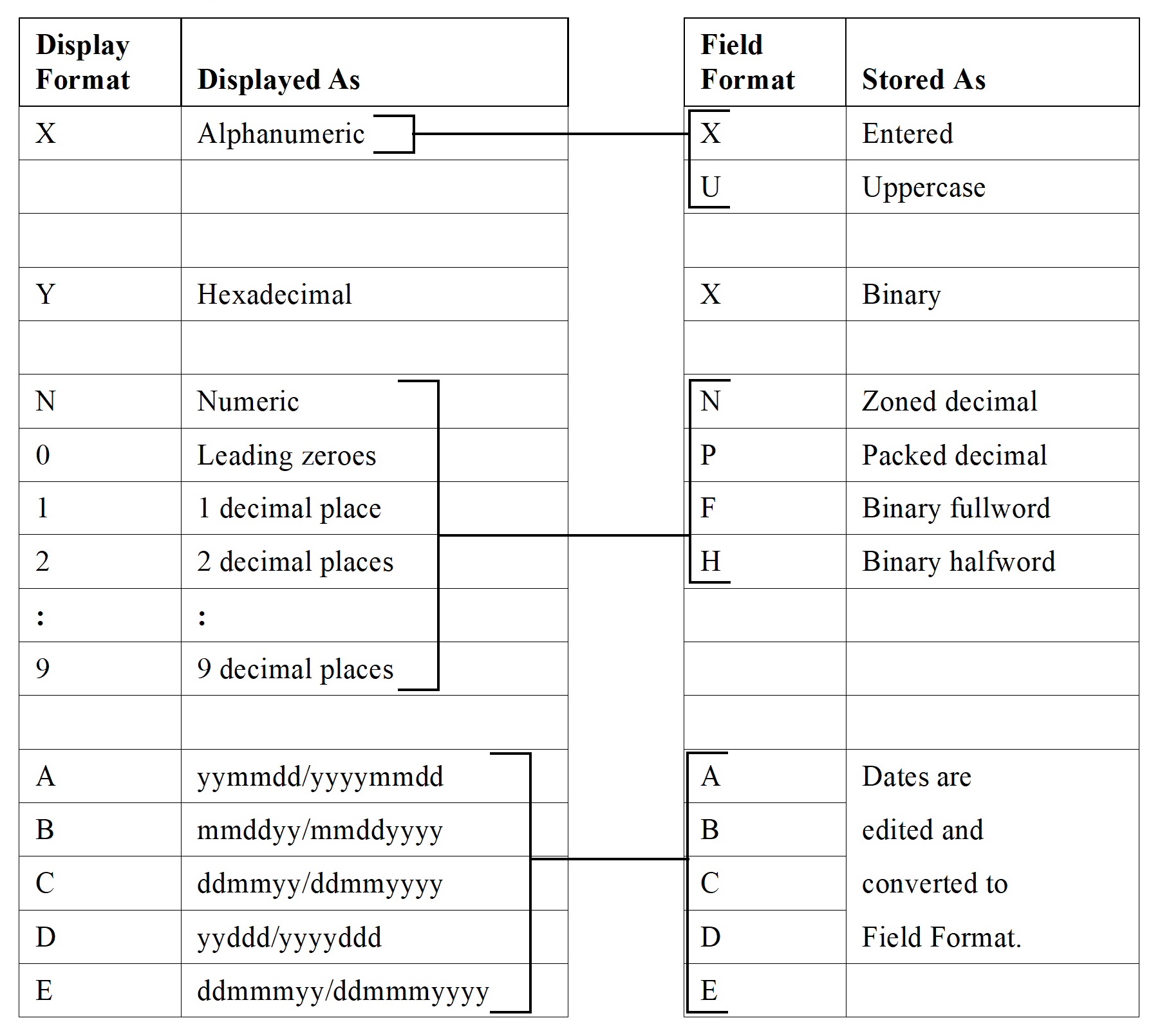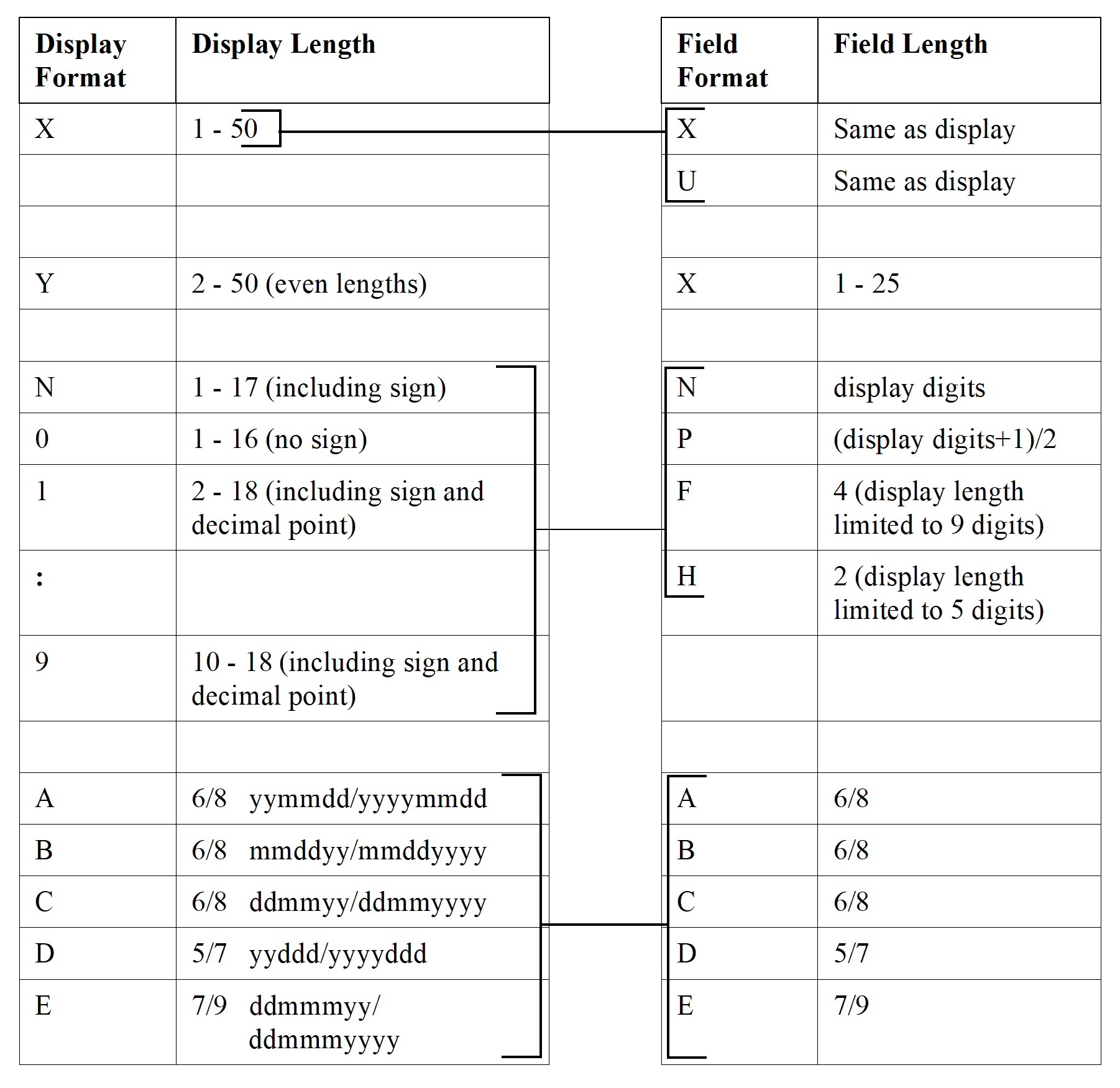Specify the format of the data, when displayed, in the Format (Display) field (see Figure 195).

To view the same data in different ways, place different values in the Format (Display) field and Format (Table-Entry) fields. For example, if X is specified for Format (Display) and X for Format (Table-Entry), then ABC is displayed as ABC. However, if Y is specified for Format (Display) in this example, the hexadecimal value of ABC is shown, which is C1C2C3.
When a value is specified for Format (Display), Format (Table-Entry) is set to a default. The following table shows the Format (Display) value and the associated Format (Table-Entry) default value (see Table 193).
|
Display Format Entered |
Default Field Format |
Default Rule |
|---|---|---|
|
X |
U |
Translate lowercase alphabetic characters to upper case. |
|
Y |
X |
Pack hex digits into characters, unedited. |
|
N,0,1,2 to 9 |
N |
Store numbers as zoned decimal. |
|
A |
A |
Store dates in format used on input, if LENGTHs are not entered, they will default to the shorter lengths like year represented as YY. |
If neither Display nor Storage Format is entered, they default to X and U respectively.
Length (Display) and Length (Table-Entry)

Attributes (Display)
Attributes specify how the data in the field is displayed and whether or not edits are allowed. Valid values are:
- a blank, which is the default. It specifies that the field is displayed and can be edited.
- N, which specifies that the field is not displayed with this View. Suppressed fields are useful because they restrict fields that users see.
- S, which specifies that the field is not displayed when the rows on the tablesONLINE Select Row screen are being scrolled. However, when the row is selected, all the fields are displayed on the tablesONLINE Row Edit screen. Suppressing fields on the tablesONLINE Identify Row screen is useful to not display fields that are irrelevant to the row selection criteria.
- F, which specifies that the field is a filler field — it is storage-allocated for future expansion.
- C, which specifies that the field is a comment field and requires no storage.